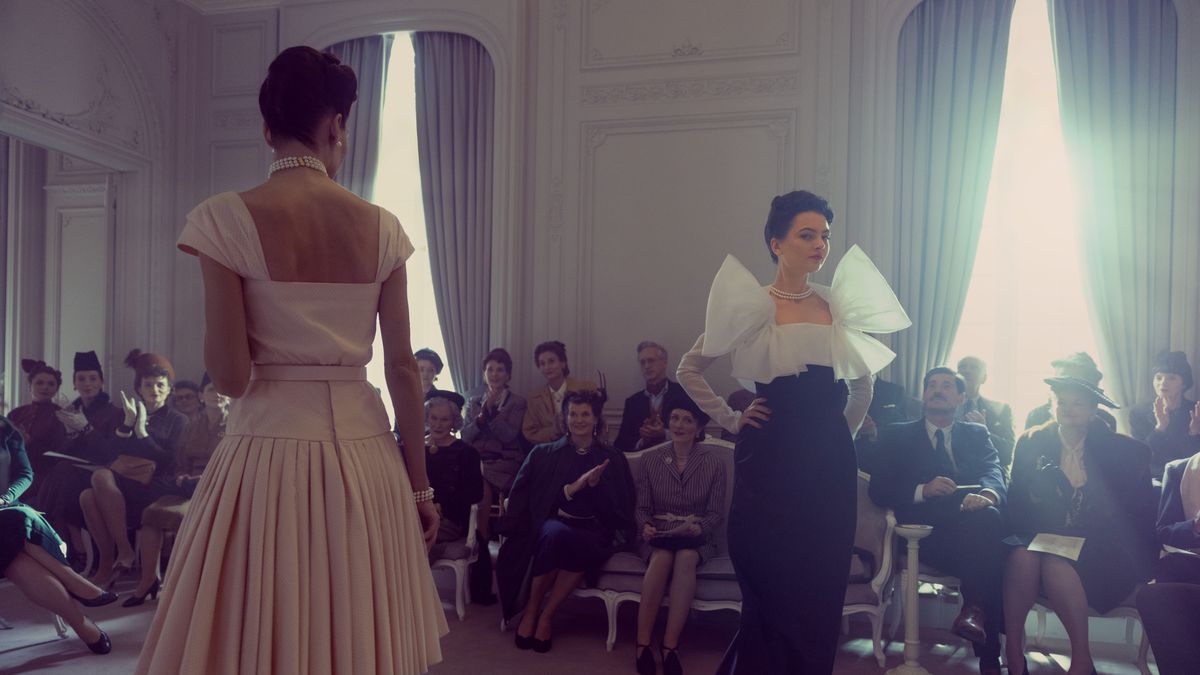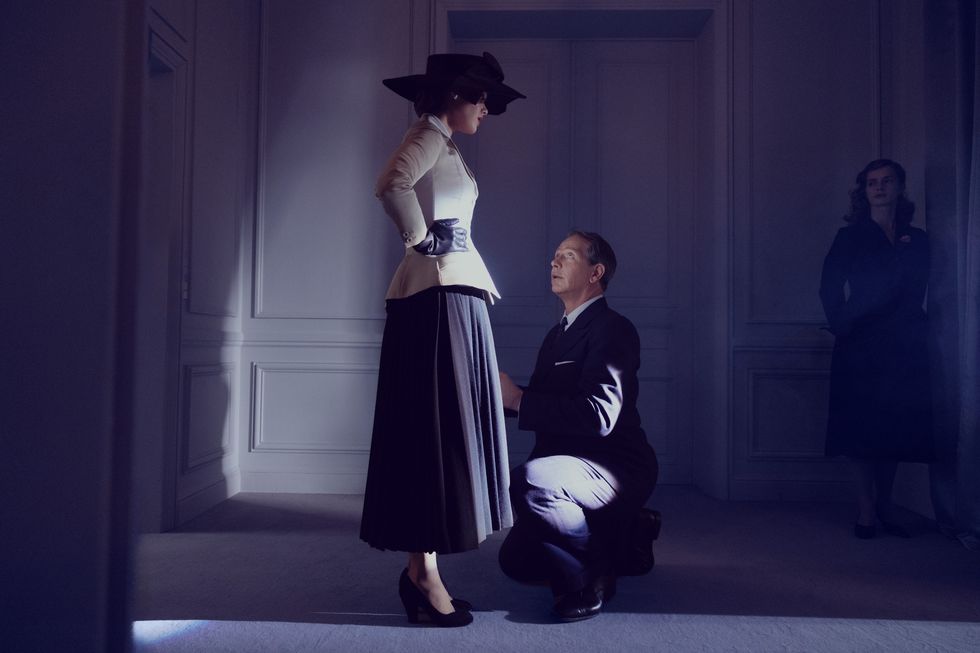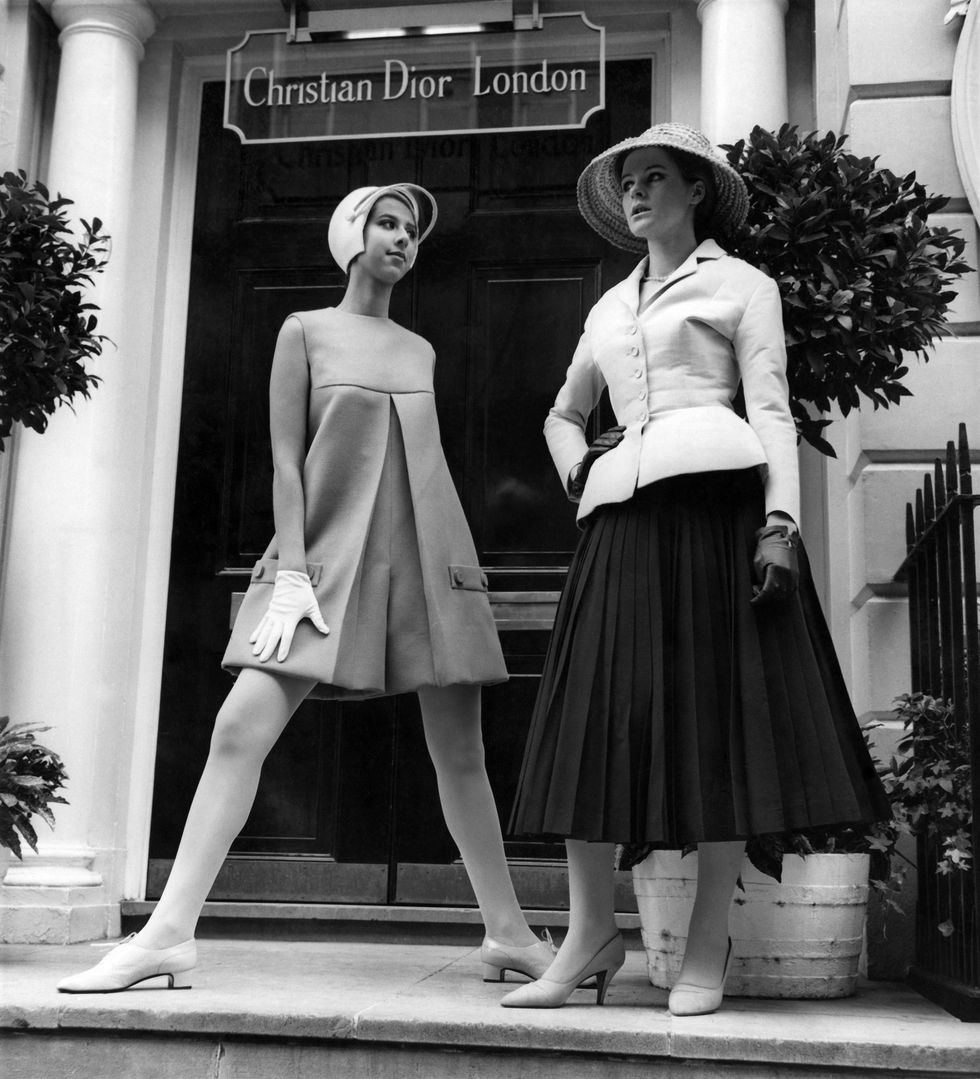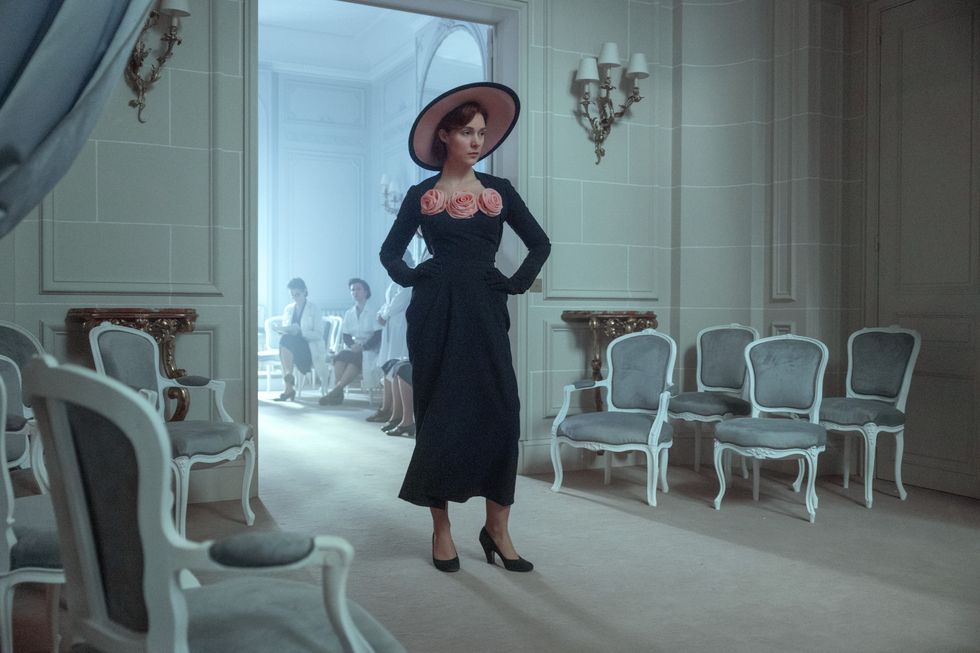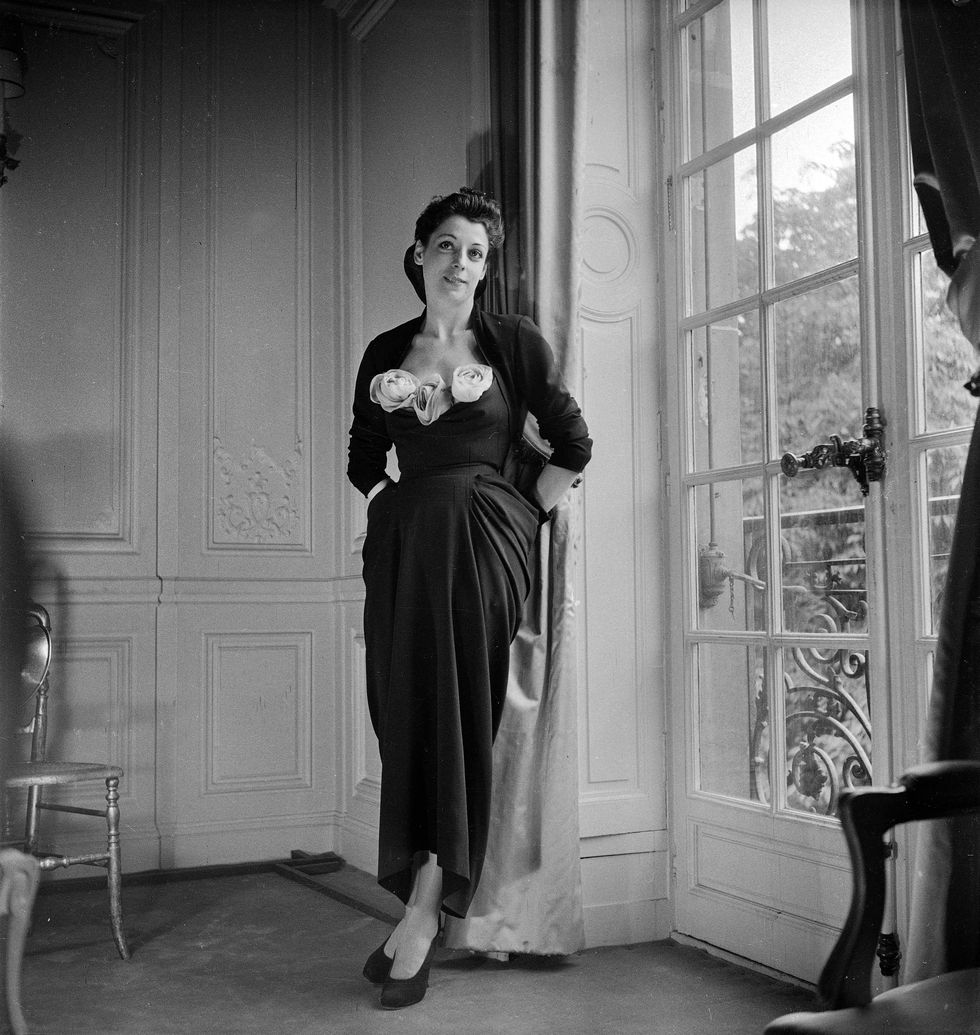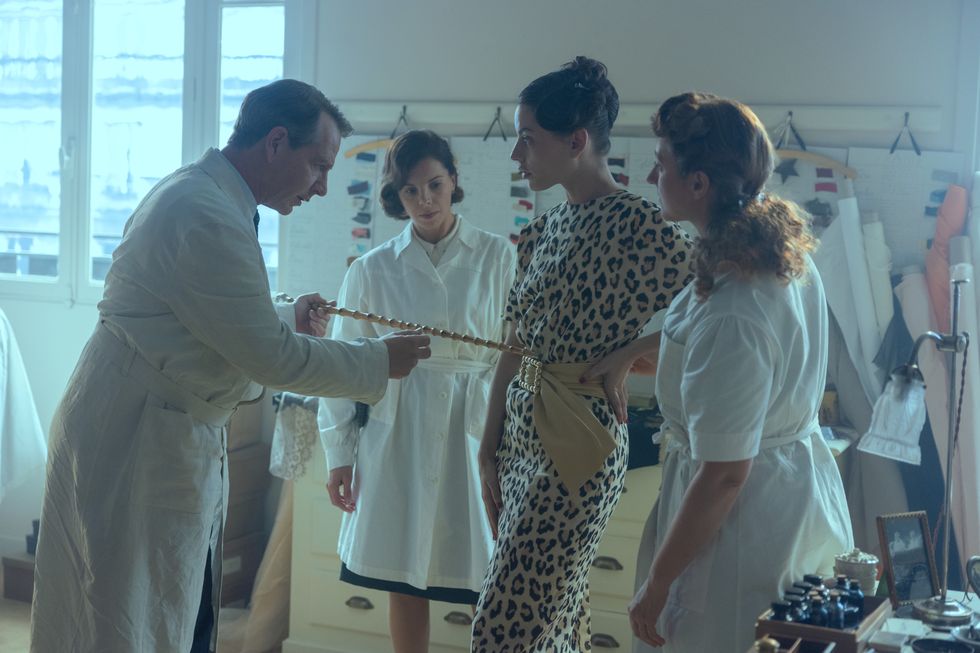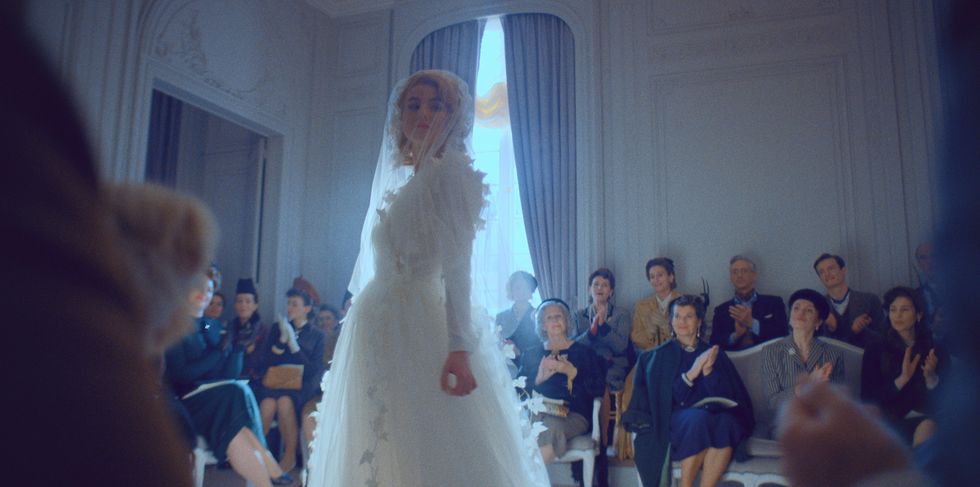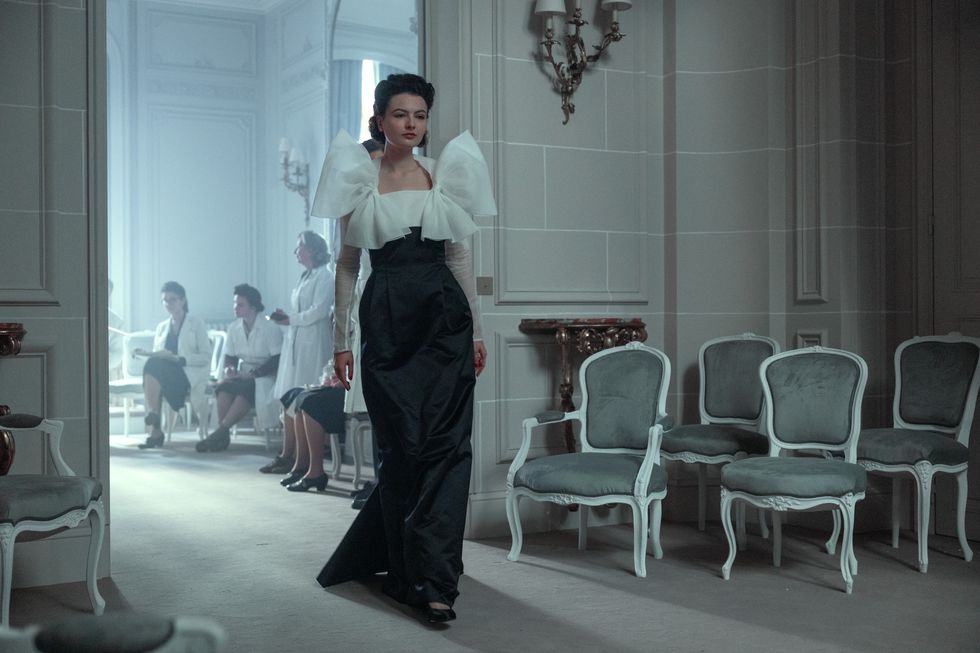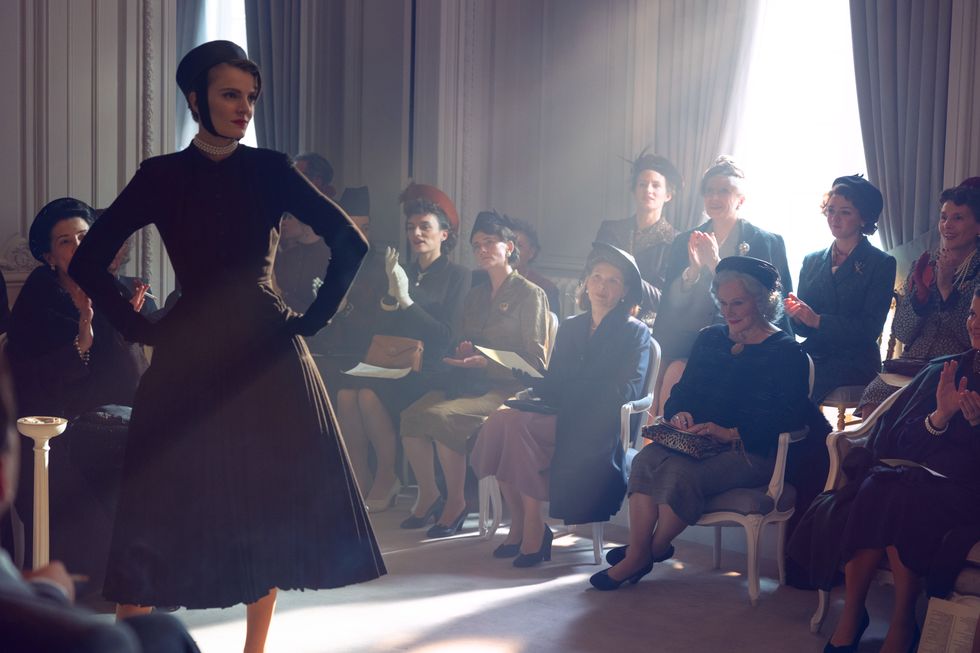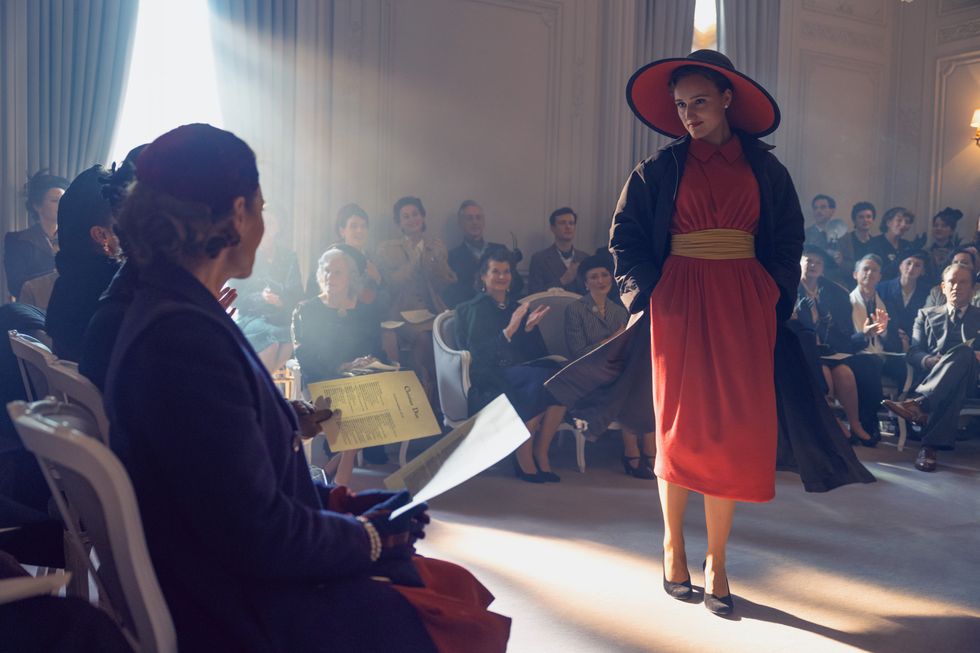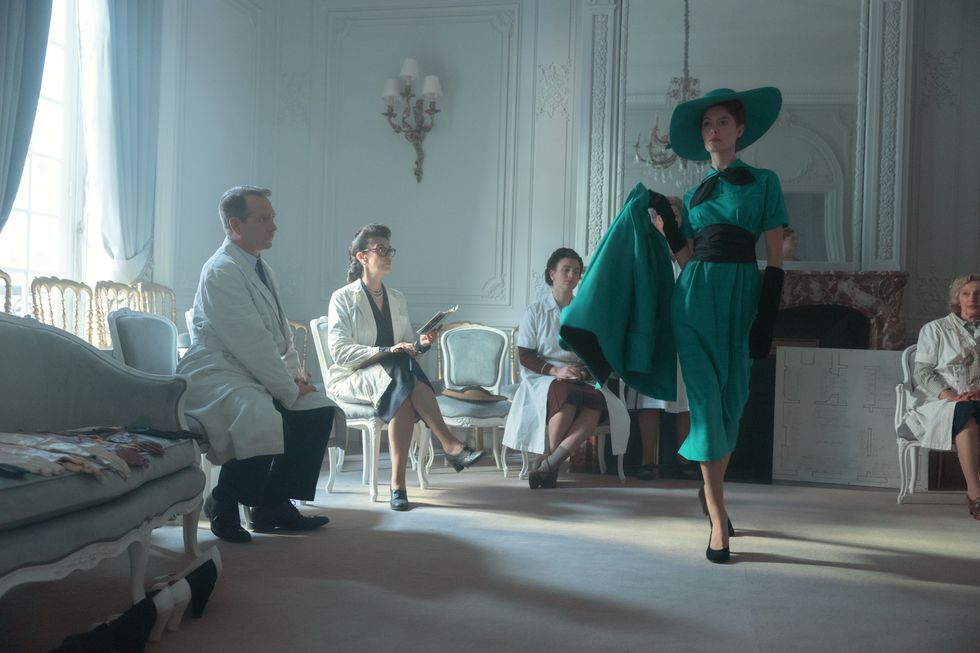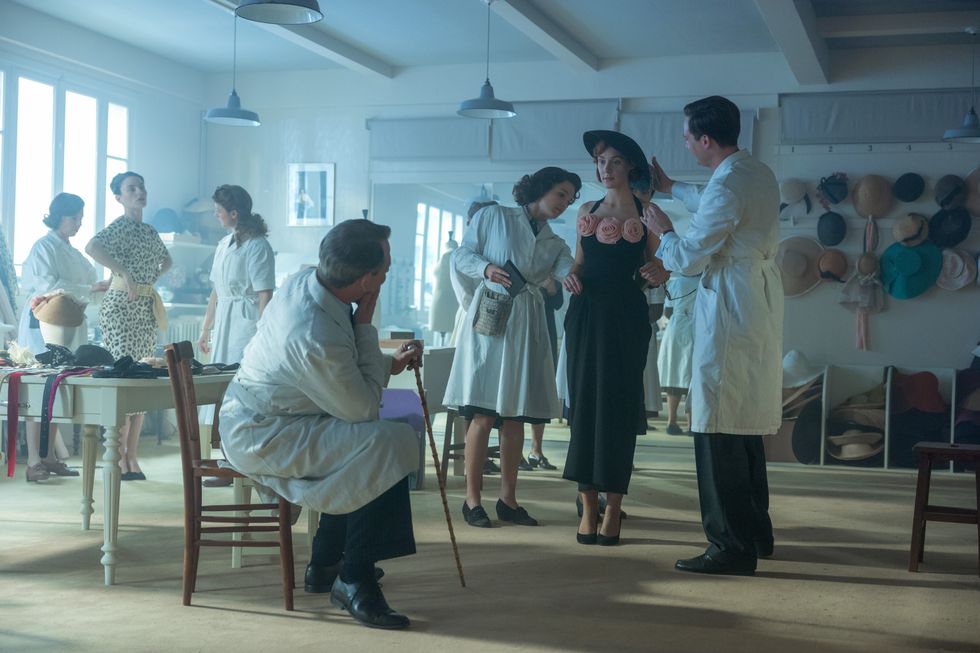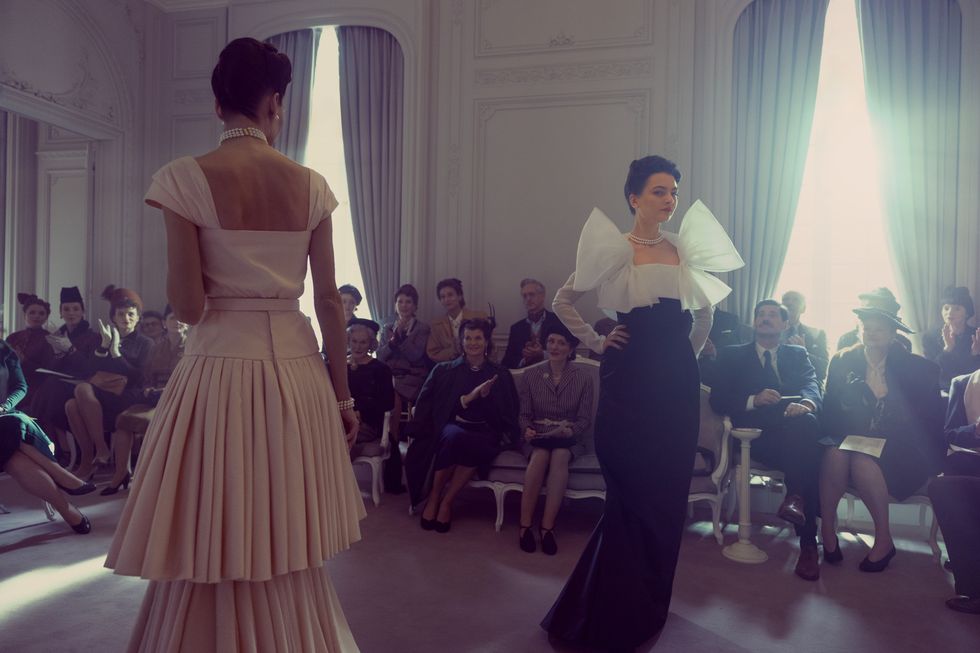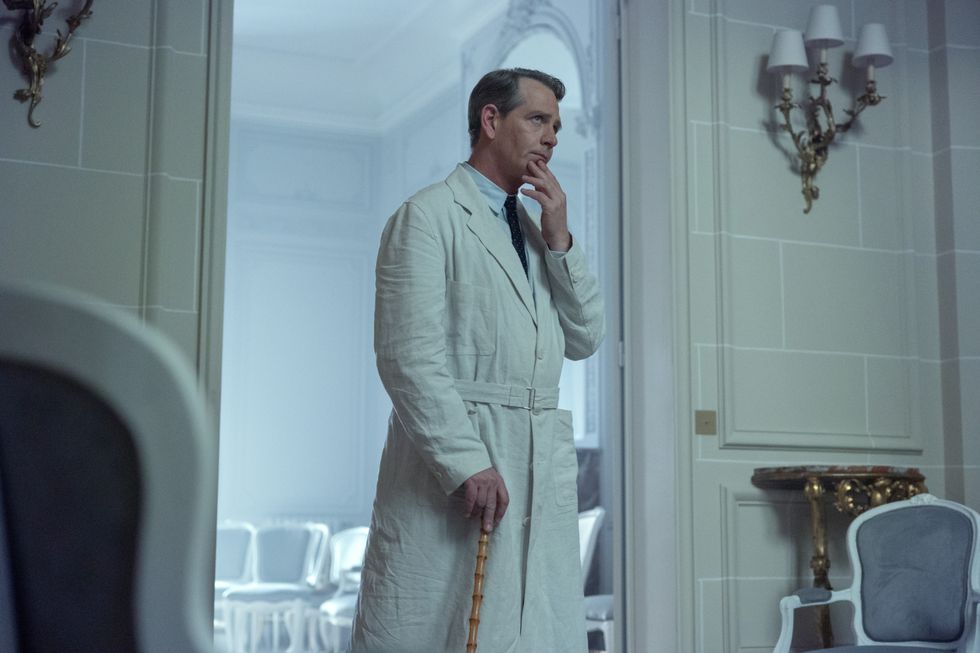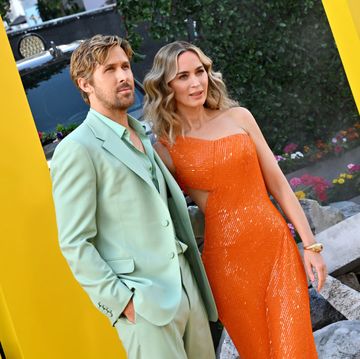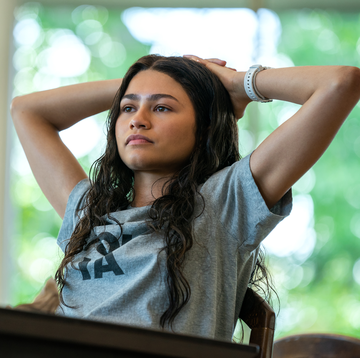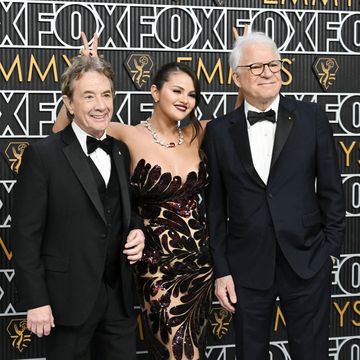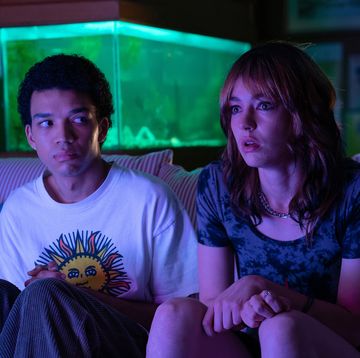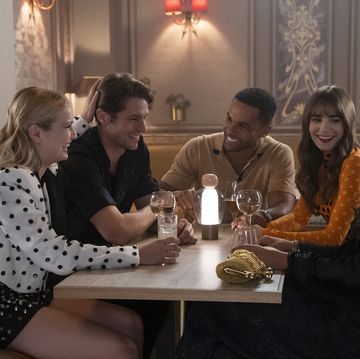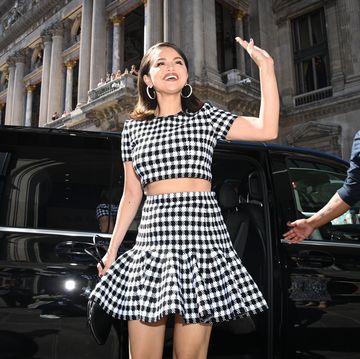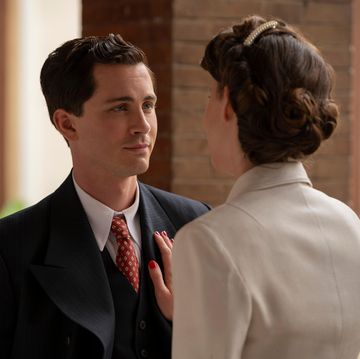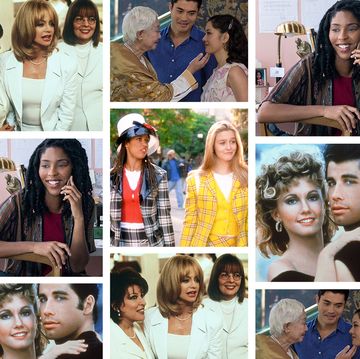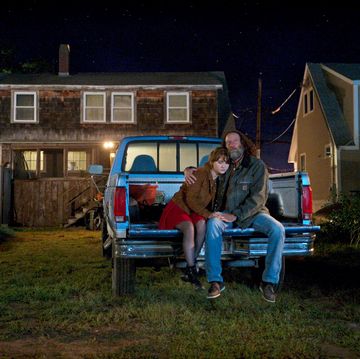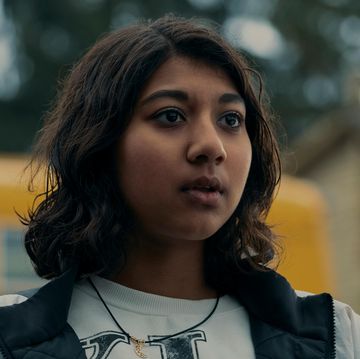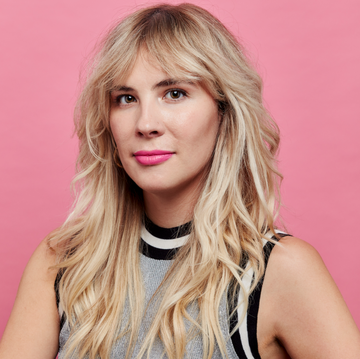Christian Dior’s seminal 1947 collection, famously called “The New Look,” comes (back) to life in the season finale of Apple TV+’s series of the same name. In the wake of World War II, his dramatic silhouettes and couture craftsmanship scandalized some and inspired others, but nonetheless shaped the course of fashion history. Costume designer Karen Muller Serreau had the grand task of recreating this very assortment for the show.
Every runway look in the show was recreated—no archival loans here. In the finale specifically, when Dior (Ben Mendelsohn) presents his revolutionary first line, there are 11 recreated looks including, of course, the Bar suit. Serreau wanted the lineup to include “a mixture of afternoon, cocktail and evening,” concluding with a wedding dress called fidélité.
The preparation process required extensive research and collaboration with Dior Heritage, which contains many of the house’s archives. “We were looking at any photos from that period, magazine cuttings and the drawings, and then trying to really work out with the help of Dior, who have an understanding of the absolute shapes of what he was doing,” Serreau explains. “So that was them measuring up waistlines and things to try and get it as exact as The New Look fashion show was at that time.”
However, in many cases, there was nothing physical to reference, just photos and sketches. For a dress that appears in episode one, Serreau and her team were able to see a reference in-person in a museum, which they could measure and copy. “Seeing one dress really helps us see the way they made the others,” she says.
For the finale, the team had looked at the Bar suit and Doris coat, in a somewhat roundabout way. The workshop that made the costumes had recently done miniature Dior recreations for the brand’s museum, so they already had access to the Doris coat and Corolle dress.
“So they sort of knew that, which helps us with the rest in a way that there’s a basic knowledge of how they were actually constructed,” Serreau says. “But then we were having to work out quite a lot of things—where it’s a bolero, where it’s a sleeve. And just the heights of waists and things like that, or where the pleats are.”
But the rarity of the original pieces made the final runway show on-screen even more special. “For us, but I think for Dior as well, when they actually saw these fashion shows in the series, they had tears in their eyes, because it was the first time that they’d actually seen them all alive,” Serreau says. “They’d been looking at pictures and studying them for years, but they’d never seen them all come to life like that. And really, I mean, it was like, wow. We really felt that we were there in the moment.”
Get a closer look at the pieces with these photos, exclusively on ELLE.com.
Bar Suit
“The jacket is so incredibly sculptured inside, it’s like an architectural piece, really,” Serreau says. “It was just very interesting working it out, and to get the right volumes and to get the cinched waist to not really cinch. I mean, we had to look for models to begin with that had small waists.”
Then they had to discern where to put padding in the hips and just how much cloth to use overall. “I think we used 12 meters of cloth in the skirt. And then working out lengths and things like that,” she says.
Amour Dress
“We had to kind of really try and work it out, because for that one, all we really had were drawings. And there were a couple of pictures and one old film, I think, where we see her walking past with it. But it’s actually got a little bolero on the top of it—we had to look really closely and see that it was a separate bolero over a strapless dress.”
Like all the dresses, this one with the rose details was made in white cloth first before cutting into the final fabric. “Then it was just really working out how those roses were made and getting the right cloth. And then just working out size, really.”
Leopard Print
“I thought that it looked so contemporary to me, with its leopard print,” she says of the Jungle dress. “I thought it was really interesting to have because it could really be something that you wear today.”
Dior even reproduced that specific fabric for the production. “So it’s identical to the pattern. And as I said, I couldn’t use any other patterns of [other looks] that I liked just because there was not enough cloth for us to reproduce it.”
A more extreme case was the polka-dotted Figaro dress, which consists of a net over another cloth. “And that net, we had it made up so that the dots were absolutely identical in spacing and sized to the swatch that we had access to,” Serreau says.
“We were lucky that there was a little tiny swatch in the archives. And with our white gloves, we had a little ruler and we measured the exact sizes of it all so we got it absolutely exact. And then had the dots embroidered onto the net.”
La Fidélité
“That was quite difficult,” Serreau says of the bridal gown covered with ivy appliqués.
“We spent quite a lot of time getting it right, because there was very, very little documentation on that one. We’ve got a photo of Dior standing with the model wearing the dress at that time, and then a drawing. So we were really trying to work out exactly how it fell in the front and getting the volume right on it, because it’s layers of netting. And then all the ivy we had reproduced, it’s all handmade. And that’s with the artisans in Paris that put together flowers for haute couture [houses] in France.”
The looks took weeks to produce, to make time for several fittings and hand-made details. “Doing all the fittings on the white cloth and altering the white cloth to make up the patterns. And then, when it’s in white cloth, we recut into the cloth, and there’s always a slight difference when you cut it into the real cloth that we then have to readjust.”
Their work didn’t end there: Serreau and her team made the gloves, belts, and shoes as well.
Bows
“It took us quite a lot of working out to get the bows in the right places and how they worked on it. And then getting the exact right cloth so that they stood up as they should do. We really looked at every little detail to try and get them as exact as we possibly could. We would love one day for one to be found so that we could now compare to what we actually did.”
Corolle
The Bar dress, Doris, and Corolle were among the already-existing looks. Though Serreau didn’t get to see them herself, the workshop she was working with managed to measure them all up.”
Scream
Some looks even had to be turned into flowers for a dream-like sequence in the episode. It might look like it’s mostly CGI work, but they’re actually physical costumes. Serreau and her team made flower versions of three looks, which appeared more haute couture than theatrical and gaudy.
“That was a challenging moment: in the middle of making all these dresses, suddenly turning them, as well, into flowers,” she says. In the end, the Bar suit became a fleur-de-lis, Scream became a poppy, and Longchamps became an anemone.
See more images below.
